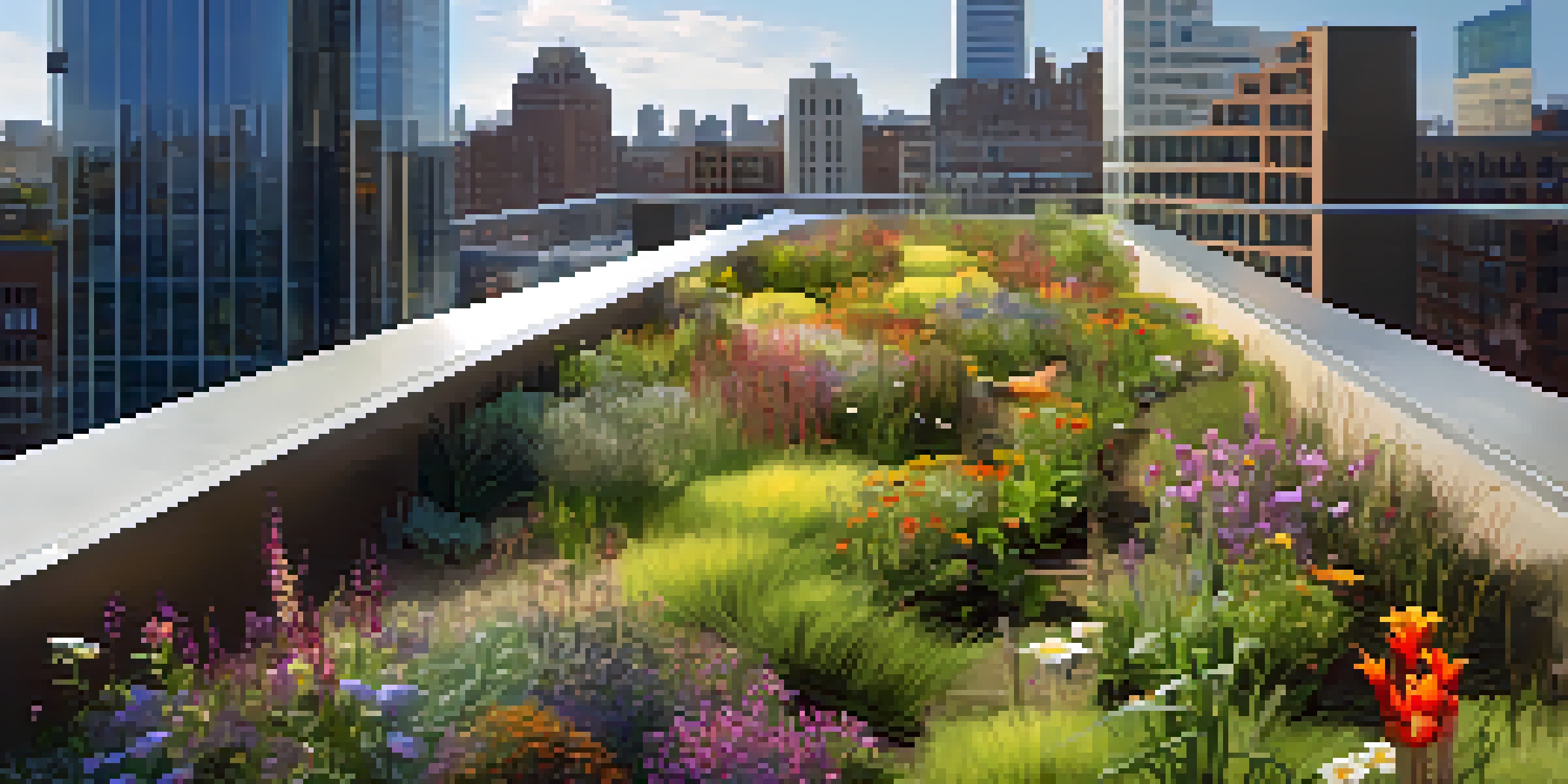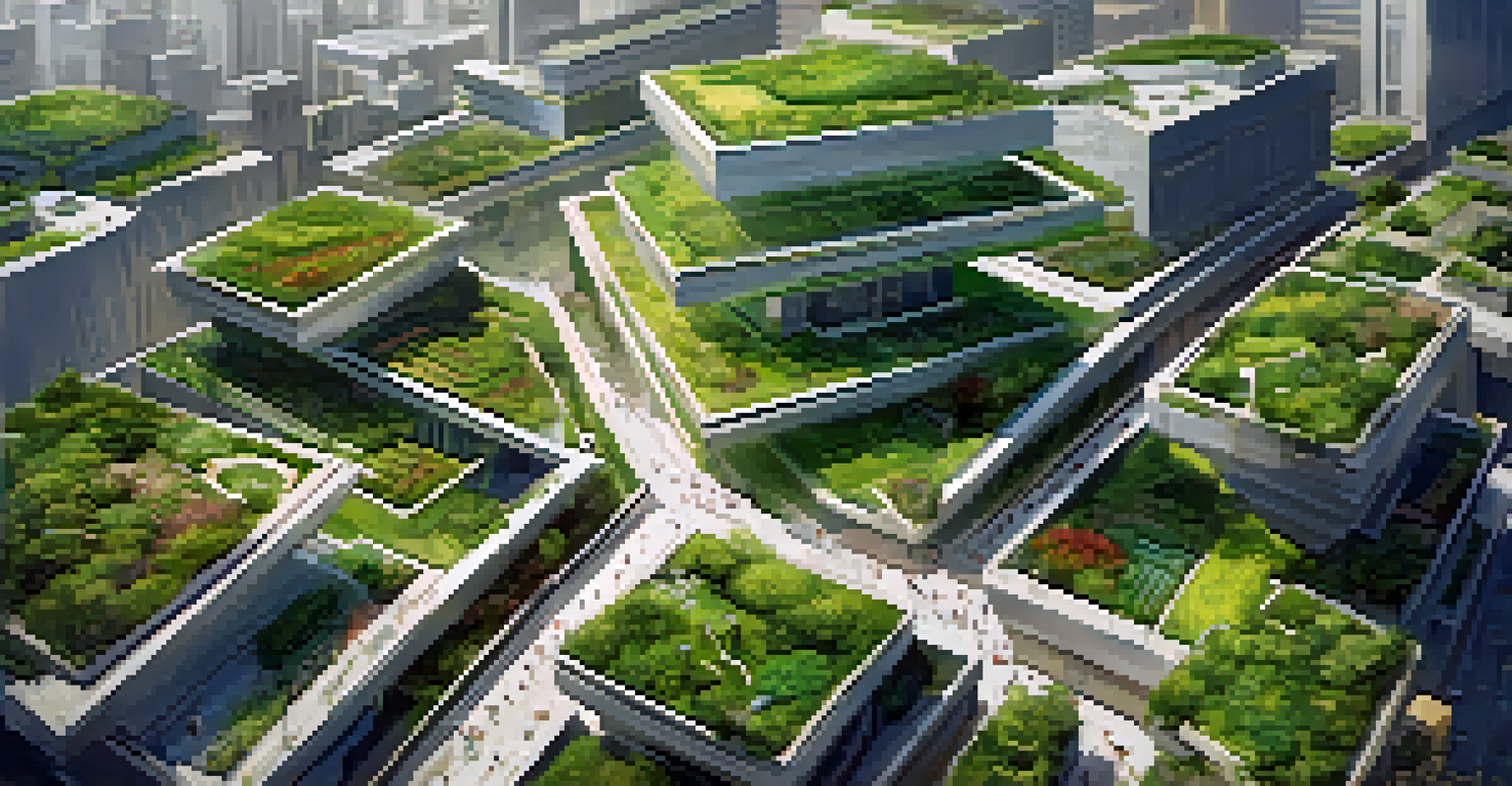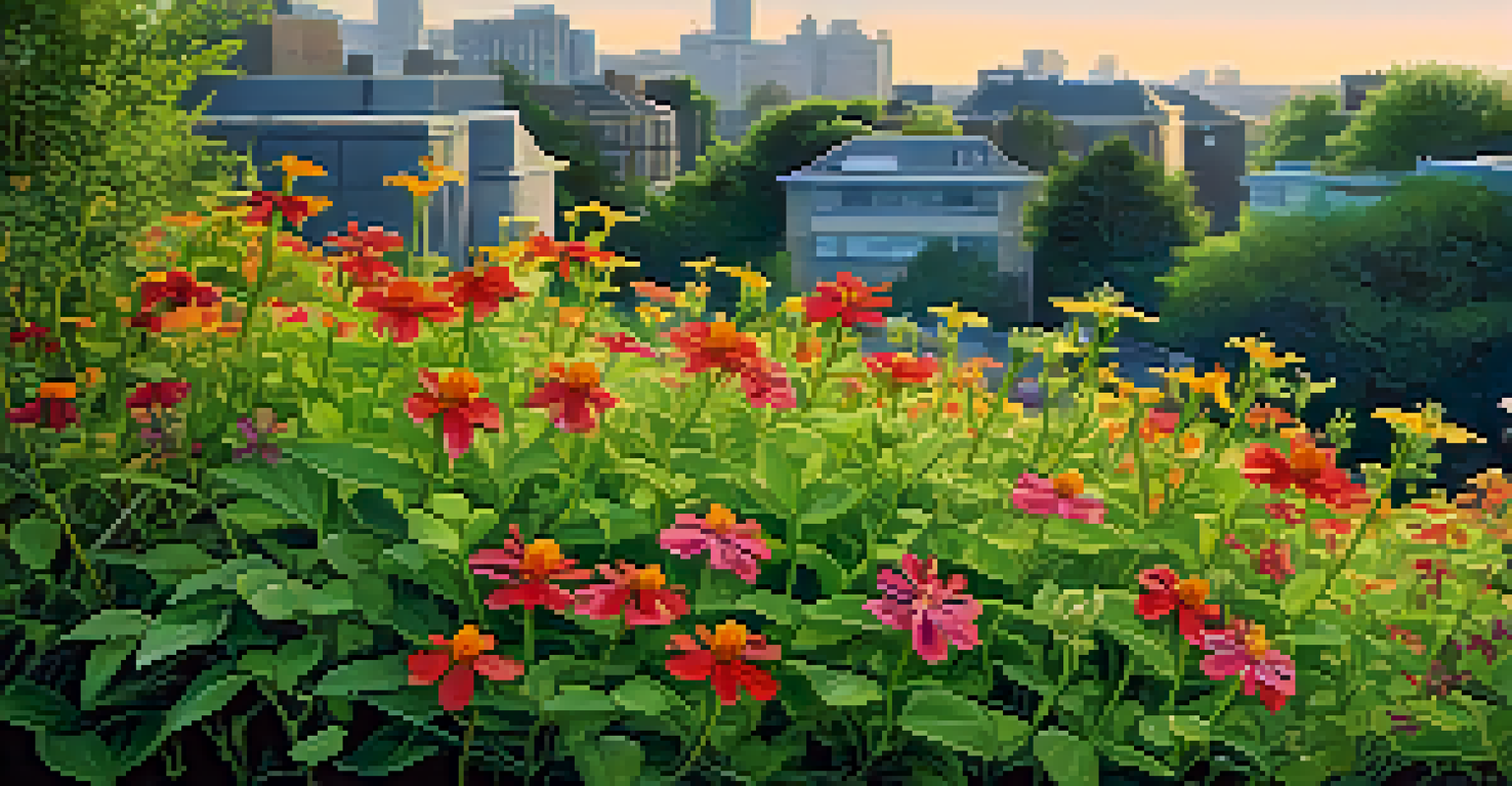The Role of Green Roofs in Urban Biodiversity Enhancement

Understanding Green Roofs and Their Importance
Green roofs are essentially rooftop gardens that incorporate vegetation, soil, and drainage systems. They provide a sustainable solution to city living, where natural landscapes are often replaced with concrete. By reintroducing greenery to urban areas, green roofs can help mitigate various environmental issues, including air pollution and heat islands.
Green roofs are a way to connect people with nature in urban environments, fostering biodiversity and community engagement.
These structures not only enhance the aesthetic appeal of buildings but also offer numerous ecological benefits. For instance, they create habitats for various species, contributing to urban biodiversity. In a world where habitats are increasingly fragmented, every green space counts in supporting wildlife.
Moreover, green roofs can serve as a vital tool in urban planning. By integrating nature into the built environment, cities can enhance their resilience to climate change. They provide a practical way to manage stormwater, improve air quality, and reduce energy costs, all while promoting biodiversity.
How Green Roofs Foster Urban Wildlife Habitats
One of the most significant roles of green roofs is their ability to create habitats for urban wildlife. Even in densely populated cities, these rooftop gardens can provide essential resources like food, shelter, and breeding sites for birds, insects, and other animals. This is especially important as urban sprawl continues to encroach on natural habitats.

For example, many species of birds, including sparrows and bluebirds, have been observed nesting on green roofs. Pollinators such as bees and butterflies also thrive in these environments, as the diverse plant life offers nectar and pollen. In this way, green roofs can help restore some of the lost connections between urban areas and the natural world.
Green Roofs Enhance Urban Biodiversity
Green roofs provide essential habitats for wildlife, facilitating connections between urban areas and natural ecosystems.
Additionally, green roofs can serve as stepping stones for wildlife, allowing them to navigate through urban landscapes. By linking various green spaces, they help maintain genetic diversity within species. This interconnectedness is crucial for the survival of many urban-dwelling species, enhancing overall biodiversity.
The Role of Native Plants in Green Roofs
Selecting the right plants is essential for the success of green roofs, particularly when it comes to promoting biodiversity. Native plants are often the best choice, as they are adapted to the local climate and soil conditions. They require less maintenance and provide the necessary resources for local wildlife.
Green roofs are a sustainable solution to our urban challenges, providing a refuge for wildlife and improving our quality of life.
For instance, native wildflowers can attract pollinators while offering food sources for various insects. Additionally, they tend to be more resilient against pests and diseases, reducing the need for chemical interventions. By using native flora, green roofs can become vibrant ecosystems that support a wide range of species.
Moreover, incorporating a variety of plant types can create microhabitats, which are important for different wildlife species. This diversity not only enhances the ecological value of green roofs but also ensures that they can adapt to changing environmental conditions. Overall, native plants are a key ingredient in the recipe for successful green roofs and urban biodiversity.
Stormwater Management Benefits of Green Roofs
Green roofs play a crucial role in stormwater management, which is an essential aspect of urban planning. By absorbing rainwater, these roofs help reduce runoff and prevent flooding in city streets. This not only protects infrastructure but also minimizes the risk of water pollution in local waterways.
The vegetation on green roofs acts like a sponge, soaking up rainwater and gradually releasing it back into the atmosphere through evaporation and transpiration. This process helps maintain a balanced water cycle within urban environments, which is often disrupted by hard surfaces. As a result, green roofs can significantly alleviate the stress on urban drainage systems.
Stormwater Management Solutions
By absorbing rainwater, green roofs reduce runoff and help prevent flooding, contributing to healthier urban water systems.
Moreover, by filtering pollutants from rainwater, green roofs contribute to cleaner water in the surrounding areas. This is especially important in cities where stormwater runoff can carry harmful substances into rivers and lakes. In this way, green roofs not only enhance biodiversity but also promote healthier urban ecosystems.
Green Roofs and Air Quality Improvement
Another significant benefit of green roofs is their ability to improve air quality in urban areas. Plants naturally filter pollutants from the air, absorbing gases like carbon dioxide and releasing oxygen. This process helps to reduce the concentration of harmful substances, leading to cleaner air for city residents.
Additionally, green roofs can help mitigate the urban heat island effect, where cities become significantly warmer than their surrounding rural areas. By providing shade and releasing moisture, green roofs can lower ambient temperatures, which contributes to better overall air quality. This cooler environment is not only more comfortable for inhabitants but also reduces the need for energy-intensive cooling systems.
Incorporating green roofs into urban landscapes can lead to significant public health benefits. Improved air quality means fewer respiratory issues and other health problems related to pollution. Thus, green roofs contribute to a healthier urban population while supporting biodiversity.
Community Engagement and Green Roof Initiatives
Green roof projects can also foster community engagement and awareness about biodiversity. When local communities are involved in the planning and maintenance of these spaces, they develop a deeper connection to their environment. This sense of ownership encourages residents to take pride in their neighborhoods and actively participate in preserving local ecosystems.
Workshops and educational programs centered around green roofs can help inform community members about the importance of biodiversity and sustainable practices. These initiatives not only provide valuable knowledge but also create opportunities for collaboration among residents, local businesses, and municipal authorities.
Community Engagement through Green Roofs
Involving local communities in green roof initiatives fosters environmental awareness and strengthens connections to nature.
By promoting green roofs as community spaces, cities can enhance social cohesion and encourage a collective effort towards environmental stewardship. This community-driven approach not only benefits urban biodiversity but also strengthens the bond between people and nature in urban settings.
The Future of Green Roofs and Urban Biodiversity
As cities continue to grow, the importance of green roofs in enhancing urban biodiversity cannot be overstated. With ongoing advancements in technology and design, green roofs are becoming more accessible and efficient. Innovations in modular systems and sustainable materials allow for easier installation and maintenance, making them a viable option for more buildings.
Moreover, as awareness of climate change and environmental issues increases, more city planners and policymakers are recognizing the value of integrating green roofs into urban infrastructure. Incentives and regulations that support green roofing can encourage more developers to adopt these practices, leading to a greener urban landscape.

Ultimately, the future of green roofs looks promising as they continue to play a pivotal role in promoting biodiversity in cities. By embracing these green spaces, we can create healthier, more resilient urban environments that benefit both people and wildlife.